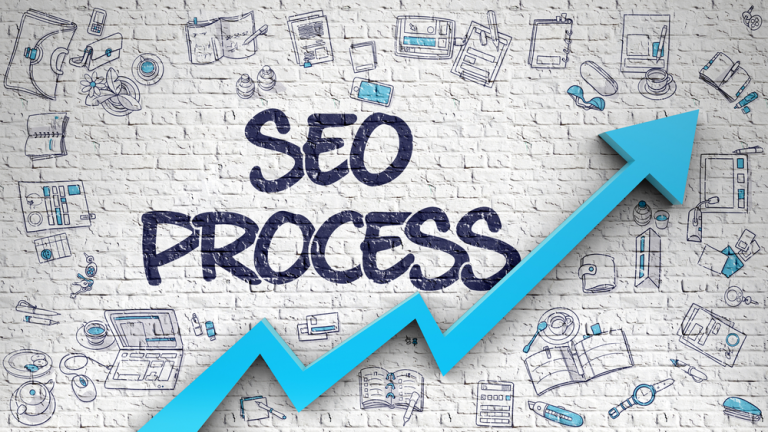Ultimate 2026 Web Hosting Guide: 7 Proven Steps to Start
AFFILIATE MARKETING IN 2026: HOW TO START A SUCCESSFUL WEBSITE PROTOCOL: ACTIVE
ID: REF-2025-00411Conclusions built strictly upon verifiable data and validated research.
Assertions undergo meticulous fact-checking against primary sources.
Delivering clear, impartial, and practical insights for application.
🔑 Key Takeaways
- Start with Shared Hosting: 90% of beginners don’t need VPS or dedicated servers until they exceed 10,000 monthly visitors.
- “Unlimited” is a Myth: Every host has hidden limits; focus on actual CPU, RAM, and inode allocations in their Acceptable Use Policy.
- Location Beats Price: A budget host with servers near your audience outperforms premium hosting on a distant continent.
- Uptime Math: A 99.9% uptime guarantee still allows 43 minutes of downtime monthly. For business, demand 99.95%+.
- Demand Free SSL & Backups: Let’s Encrypt provides free SSL certificates. Daily backups are non-negotiable for security.
- Test Before Committing: Use month-to-month billing for 6-12 months before locking into a long-term contract, regardless of the discount.

Web Hosting Explained: The Complete Beginner’s Guide to Getting Your Website Online in 2026
How do you choose the right web hosting? You start by ignoring the marketing and focusing on three things: your actual traffic, your technical skill, and the host’s real performance limits.
Most beginners waste $300+ yearly on hosting they don’t need. The simple truth: web hosting is renting space on a computer connected to the internet 24/7. Everything else is designed to confuse you into overpaying.
This guide shows you how to choose hosting that matches your needs, avoid costly mistakes, and get online without technical headaches. You’ll learn why “unlimited” plans aren’t unlimited and how to get enterprise-level performance for beginner prices.
What Is Web Hosting? The Real Definition Nobody Tells You
Web hosting is renting computer space that stays connected to the internet. Your website is a collection of files. These files need a public home.
Think of it like this: If your website is a store, web hosting is the land it sits on. Without land, you can’t build a store. Without hosting, your website files are invisible.
Here’s what happens when someone visits your website:
- They type your domain name (e.g., yoursite.com)
- Their browser queries the Domain Name System (DNS)
- DNS points to your web host’s server IP address
- Your host serves your website files to their browser
- Their browser renders your website
That’s web hosting in 30 seconds. Everything else is a variation on this concept.
How Does Web Hosting Work? The Technical Stuff Made Simple
When you buy web hosting, you’re renting:
- Storage space for your website files (HTML, images, databases).
- Processing power (CPU/RAM) to run your website code.
- Bandwidth (Data Transfer) to send data to visitors.
- An IP address so the internet can find your server.
Your host maintains data centers with servers running 24/7. These servers use software like Apache or Nginx to deliver files.
The Domain Name System (DNS) is the internet’s phone book. It translates your domain name into the server’s IP address in milliseconds.
What Are the Types of Web Hosting? (And Which One You Actually Need)

Most guides list every type without context. Here’s what you actually need.
Shared Hosting ($3-10/month)
What it is: Your website shares a server with hundreds of other sites. Providers like Bluehost and SiteGround excel here.
Perfect for:
- First-time website owners
- Blogs under 10,000 visitors/month
- Testing business ideas
- Learning how to register a domain name
The truth: This is where 90% of beginners should start. It’s cheap, easy, and sufficient for your first year.
VPS Hosting ($20-80/month)
What it is: You get a Virtual Private Server—your own partitioned space with dedicated resources.
Perfect for:
- Websites getting 10,000-50,000 visitors/month
- Online stores (WooCommerce, Shopify Plus)
- When shared hosting feels slow
The truth: Most people upgrade too early. Use tools like GTmetrix to confirm a speed issue first.
Dedicated Hosting ($100-500/month)
What it is: You rent an entire physical server (e.g., from Liquid Web).
Perfect for:
- Enterprises with 100,000+ monthly visitors
- Applications with special security requirements (HIPAA, PCI DSS)
- High-traffic SaaS platforms
The truth: You’ll know when you need this. If you’re reading this, you don’t.
Cloud Hosting ($10-200/month)
What it is: Your site runs on a network of servers (like AWS, Google Cloud). If one fails, others take over.
Perfect for:
- Businesses that cannot afford downtime
- Sites with unpredictable traffic spikes
- Tech-savvy users wanting maximum control
The truth: Often overhyped for beginners. The complexity of platforms like AWS isn’t worth it without specific needs.
Hidden Web Hosting Costs That Inflate Your Bill
Choosing a web host feels simple—until the first surprise bill arrives.
Hidden web hosting costs can triple your expected yearly spend. Flashy promises like “unlimited everything” evaporate in the fine print. Here are the insider realities hosts hope you never discover.
1. Unlimited Bandwidth Is a Marketing Mirage
Hosts advertise “unlimited bandwidth,” but every shared plan has an invisible throttle. Once your site hits an undisclosed I/O limit—often around 1,500 daily visitors—page loads slow to a crawl. Support blames “resource abuse.”
How to Protect Yourself
- Read the Acceptable Use Policy for exact inode and database caps.
- Run a free load test with k6 or Loader.io before launch.
- Cache aggressively with Cloudflare’s free tier to cut requests by 60%.
2. CPU Throttling Happens Without Warning
Most shared accounts include a “fair share” clause. A traffic spike or rogue plugin can trigger an automatic 24-hour slowdown. Each page takes 8–10 seconds. Google punishes this speed, and you lose rankings. A related concept is Web Hosting Comparison 2026: 7 Surprising Facts Revealed.
3. 99.9% Uptime Sounds Great—Until You Do the Math
What 99.9% uptime guarantee actually excludes is scheduled maintenance, DDoS attacks, and hardware failures. That 0.1% equals 43 minutes of outage every month. An e-commerce store doing $5,000 daily risks $1,800+ in lost revenue yearly.
Pro Tip
Track real server uptime with UptimeRobot. If the host dips below 99.9%, open a ticket—many will credit your account with logs.
4. SSL Certificates: The Free Upsell You Should Refuse
Let’s Encrypt offers enterprise-grade SSL for $0, yet hosts charge $30–$80 per year. Any cPanel host with AutoSSL can issue a Let’s Encrypt certificate in one click—demand it. This ties into SiteGround Review 2026: Ultimate Web Hosting Analysis.
5. The Renewal Price Spike Trap
That $3.95/month teaser jumps to $11.99+ at renewal. Multiply by 36 months and you pay $431 instead of $142. Month-to-month billing keeps hosts honest; upgrade only after 6–12 months of stable performance.
6. Oversold Servers = Neighbor-Caused Crashes
Your “private” account is packed 400+ to a server. One viral blog post on the same server can drag every site down. Look for hosts using CloudLinux isolation for resource fairness.
7. Fine-Print Limits That Can Suspend Your Site
Hidden caps on cron jobs, email sending, or database queries can get you shut off. Many shared plans limit you to 150 emails per hour—hit 151 and you’re locked out for 24 hours.
8. Whois Privacy: Free Elsewhere, $9.99 Here
Registrars like Namecheap include WHOIS Guard at no cost. Hosts that tack on fees are double-dipping. Register your domain separately and point the nameservers.
9. Daily Backups Aren’t Always Included
Site crashes at 2 a.m. and the host’s “nightly backup” is weekly. Verify retention (30 days minimum) and test a restore before you need it.
10. Support Centers with Copy-Paste Answers
Many brands outsource to call centers with scripts. When a server-level issue strikes, you’re stuck. Look for hosts with in-house engineers and a ticket-escalation SLA under 30 minutes.
11. Refund Loopholes That Deny Your Money Back
“30-day money-back” often excludes domain registration and setup fees. Some keep a $35 “administration fee.” Always pay with a credit card for dispute protection.
12. Dedicated IP Upsells Are Useless for SEO
Google confirmed shared IPs do not hurt rankings. Modern algorithms care about Core Web Vitals and content, not your IP. Save the $4/month.
13. How to Audit Web-Host Specs Before You Buy
Use these free tools:
- HostingCheck: reveals real PHP memory_limit.
- GTmetrix: test the host’s demo site from your region.
- Netcraft: shows server uptime history.
Document everything; screenshots beat verbal promises.
Relevant Video: What Is Web Hosting? I Didn’t Get It Either… Until This
14. The Hidden Cost of cPanel Licensing
cPanel raised prices 300% since 2019. Hosts pass the hike to you. Alternatives like DirectAdmin can shave $2–$3/month off your bill. For deeper insights, see The 12 Affiliate Marketing Mistakes Costing You 90% of Your Income.
15. Free CDN Credits: Too Small to Matter
Hosts bundle 10 GB Cloudflare credits. Image-heavy sites burn through that in days. Set up your own free Cloudflare account with unlimited bandwidth. Related: Why Blogs Fail: The Brutal Truth About Blogging Success in 2026.
16. Email Sending Limits That Kill Newsletters
Plans with “unlimited e-mail accounts” secretly cap you at 300 outgoing messages daily. Exceeding limits causes blacklisting. Use a dedicated service like MailerLite or GetResponse for newsletters; compare deliverability here.
17. Fine Print on Inode & Database Usage
Shared hosts may allow 200,000 inodes—roughly 60,000 files. A single WooCommerce site can hit that ceiling. Check usage in cPanel > Statistics and prune cache folders regularly.
18. How to Read Terms-of-Service Red Flags
Search the TOS for: “at our sole discretion,” “without limitation,” or “subject to change.” They signal the host can suspend you for any reason. A transparent provider lists exact resource numbers.
19. The Cron Job & Scheduled Task Limits
Many plans restrict cron jobs to one every 15 minutes. If your backup script needs five-minute intervals, use an external scheduler like EasyCron.
20. Myth of Unlimited Domains Under One Account
You can host 100 domains, but they share the same RAM and CPU pool. One spike on Site #87 drags Site #1 down. Treat “unlimited” as marketing spin.
21. Why Free Cloud Credits Are a Gimmick
10 GB CDN credits cover about 2,000 page views on image-heavy sites. Roll your own Cloudflare free tier for unlimited bandwidth.
22. Can You Sue a Web Hosting Company?
Most TOS contain binding-arbitration clauses. You can sue in small-claims court, but proving negligence is tough. Document outages. Payment disputes via credit-card chargebacks are faster.
23. Is Web Hosting Still Profitable for Affiliates?
Yes—if you promote quality. High-paying programs like WP Engine offer $200+ per sale, but conversion hinges on trust. Review profitable affiliate niches for 2026.
24. What Is the Safest Hosting Site?
Safety = transparency + support + backups. Providers with ISO 27001 certification, off-site backups, and public status pages top the list. Check benchmarks in our NameHero deep dive and Kinsta analysis.
25. Action Plan: Choose Honest Hosting in 6 Steps
- List your real traffic and storage needs.
- Verify exact inode, CPU, and email limits in writing.
- Test sales-chat response time at 2 a.m.
- Demand a free Let’s Encrypt SSL.
- Start monthly; monitor uptime with UptimeRobot.
- Keep domain (at Cloudflare) and hosting separate for portability.
❓ Frequently Asked Questions
What is the biggest mistake beginners make with web hosting?
Overbuying. They choose expensive VPS or cloud hosting when shared hosting from a provider like SiteGround is perfect for the first 10,000 visitors. Start small, then scale based on real performance data.
Is free web hosting ever a good idea?
Almost never. Free hosts like 000webhost place ads on your site, offer terrible performance, and provide no real support. For a serious project, invest at least $5/month in reputable shared hosting.
How important is server location for website speed?
Critical. If your audience is in Germany, a server in Texas adds 150+ milliseconds of latency. Choose a host with data centers near your users. Use Cloudflare to mitigate distance issues.
What’s the difference between web hosting and a domain name?
Your domain name (e.g., yoursite.com) is your address. Web hosting is the land and house where your website files live. You need both. Buy them separately for maximum control.
When should I upgrade from shared to VPS hosting?
When you consistently exceed 10,000 monthly visitors AND experience slow load times (over 3 seconds) confirmed by GTmetrix, AND your host confirms you’re hitting CPU/RAM limits.
Conclusion
Web hosting is a commodity service wrapped in marketing fog. The core truth remains: you are renting space on a computer. Success depends on ignoring hype and focusing on fundamentals.
Start with shared hosting. Demand transparency on limits. Use free tools like Let’s Encrypt and Cloudflare. Test performance for 6-12 months before any long-term commitment. Keep your domain registration separate from your hosting for flexibility.
Your next step is action. Audit your current needs against the 6-step plan above. Choose one provider, start with a monthly plan, and build your asset. The right hosting is an invisible foundation—it just works.
References
- Despite Heavy Internet Use, More Than Half of Americans Don’t Know What Web Hosting Is – HostingAdvice
- Let’s Encrypt – Free SSL/TLS Certificates
- Cloudflare – CDN & Security Services
- GTmetrix – Website Performance Testing
- UptimeRobot – Free Uptime Monitoring
- ISO/IEC 27001:2022 – Information Security Management
- Namecheap – Domain Registration & Hosting
- Kinsta – Managed WordPress Hosting
Alexios Papaioannou
I’m Alexios Papaioannou, an experienced affiliate marketer and content creator. With a decade of expertise, I excel in crafting engaging blog posts to boost your brand. My love for running fuels my creativity. Let’s create exceptional content together!







